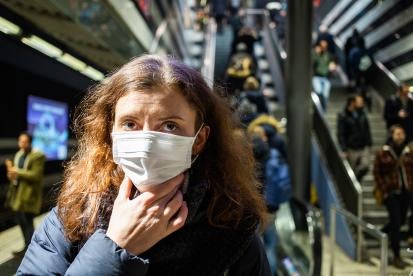When can employees who may have been exposed to COVID-19 return to work? Guidance from the Centers for Disease Control and Prevention (CDC) advises that “critical infrastructure workers may be permitted to continue work following potential exposure to COVID-19, provided they remain asymptomatic and additional precautions are implemented to protect them and the community.” This guidance applies only to critical infrastructure workers (as defined in the Department of Homeland Security CISA guidance).
The CDC explains that potential exposure means “being a household contact or having close contact within 6 feet of an individual with confirmed or suspected COVID-19.”
Steps for Employees, Employers
The CDC guidance explains that critical infrastructure workers who have had exposure but remain asymptomatic (not showing signs of COVID-19) should take the following steps along with their employers:
-
Pre-Screen: Employers should measure the employee’s temperature and assess symptoms prior to them starting work. Ideally, temperature checks should happen before the individual enters the facility.
-
Regular Monitoring: As long as the employee doesn’t have a temperature or symptoms, they should self-monitor under the supervision of their employer’s occupational health program.
-
Wear a Mask: The employee should wear a face mask at all times while in the workplace for 14 days after last exposure. Employers can issue facemasks or can approve employees’ supplied cloth face coverings in the event of shortages.
-
Social Distance: The employee should maintain 6 feet and practice social distancing as work duties permit in the workplace.
-
Disinfect and Clean work spaces: Clean and disinfect all areas such as offices, bathrooms, common areas, shared electronic equipment routinely.
Additional Recommendations for Employers
The CDC’s new guidance also provides additional recommendations for employers. For example, the CDC recommends that employees should not share headsets or other objects that are near an individual’s mouth or nose. Employers also should work with maintenance staff to increase air exchanges in the facility.
Employers should also consider ensuring social distancing by staggering breaks and making sure that employees do not congregate in the break room.
If an employee shows signs or symptoms of COVID-19 (such as fever, cough, or shortness of breath), that employee should stay home, or if the employee is at work when symptoms develop, the employee should go home immediately. If an employee has been at work with symptoms, employers should take steps to clean and disinfect the workplace, gather information about other individuals who were in contact with the ill employee, and take other steps to respond to potential exposure to COVID-19 in their facility.
Shift from Previous Guidance
This is a marked shift from the CDC’s existing guidance that recommends that asymptomatic individuals who have been exposed to someone with symptomatic COVID-19 (for example, by living in the same household, or being in close contact (less than six feet) for a prolonged period of time) should stay home for 14 days after the last exposure.
Other Considerations for Employers
Employers working through the new guidance and the workplace challenges presented by COVID-19 should keep the following in mind:
-
The CDC’s guidance relates only to critical infrastructure workers identified by the Department of Homeland Security CISA guidance. State and local orders may define essential business differently.
-
Healthcare employers should review the CDC’s guidance specific to healthcare.
-
Employers should be mindful of state and local orders regarding workers with potential exposure and guidelines on returning to work.
-
Employers conducting temperature screening should be thoughtful in establishing appropriate protocols to ensure proper employee safety and confidentiality.
-
When providing and requiring facemasks, employers should consider what type of face covering is needed and appropriate in their workplace.
Finally, the CDC’s new guidance permitting asymptomatic critical infrastructure workers to return to work following COVID-19 exposure are not mandatory. Employers should carefully consider the facts and realities relevant to their individual workplaces.







 i
i

